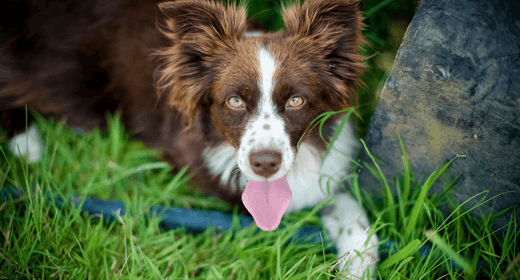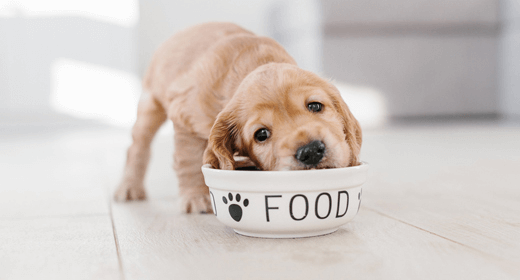

Dogs are goofy and cute animals that do the strangest things at times. We have all noticed puppies and dogs roll in the mud, lick their paws, or even sniff other dogs. Yet, the most disturbing sight is to witness a dog eating poop. Yes, dogs often try to eat their own poop, and at times another animal’s poop as well. This strange habit of dogs can be very worrisome to its caregivers, but why do dogs eat poop? Is there a valid reason for dogs to eat poop? Also, what happens if dogs eat poop? Well, there are numerous reasons to why dogs eat poop. Read the following to know more about this condition and why it occurs.
Coprophagia is a medical issue that conditions dogs to eat poop. It is a common condition and is believed to affect at least one in six dogs at a serious level, while at least one in four dogs have been caught trying to eat poop. This condition often occurs because of a decrease in the absorption of essential nutrients. Limited nutrients cause gastrointestinal issues which sometimes lead to coprophagia. A dog suffering from coprophagia finds their own as well as other animal’s stool appealing and appetizing. If you have noticed your dog eating poop or sniffing poop, then you should try to understand the reason for it before the condition exceeds.
Although coprophagia can cause dogs to eat poop, what causes this condition? Why do dogs eat their own poop because of coprophagia? Read the following to understand the various hypothesis that may be contributing to your pooch’s poop-eating habit.
If your dog eats poop there are chances of it suffering from numerous health concerns. Poop is simply waste that might carry harmful pathogens which can cause illness and uneasiness if consumed. Your pet might suffer from gastroenteritis, vomiting, decreased appetite, nausea, intestinal parasites, and diarrhea after consuming poop. Hence, it is necessary to identify the root cause of this habit and treat it at the earliest. Given below are a few steps that you can take to control and eventually stop your dog’s poop-eating habit.
Although coprophagia seems like a very serious condition, it is a very common condition. As mentioned previously one out of six dogs suffer from this condition, but with a little guidance and training, you can easily get it to stop consuming unpleasant hazardous things like garbage and poop. You should also try changing your dog’s food to more nutritious and nourishing food with high protein content, the right amount of fiber, and other nourishing elements like vitamins and minerals. However, if they continue eating poop, then you should visit a veterinarian doctor to get the condition diagnosed and treated at the earliest.
Yes, it is dogs who often eat poop because of various reasons ranging from anxiety to lack of nutrition. At least one in six dogs consume poop, but this habit can be controlled by taking the right measures.
Yes, poop is bodily waste that contains a lot of harmful germs, undigested food, and other harmful substances. Dogs can suffer from nausea, digestive issues, vomiting, and diarrhea because of eating poop.
If your dog has eaten poop, then you can do the following things to clean its mouth.


Even if a pet food is formulated to provide all of the essential nutrients required by a dog, it is of little value if the animal will not eat it. Quality pet foods are carefully formulated not only to be highly nutritious but also to be highly palatable.
Highly palatable dog food recipes contain various ingredients and raw materials, including palatants. Palatants help improve the smell, flavor, and texture of your dog’s food. Examples of palatants include fat, salt, proteins, yeasts, and other flavors that are added to make food taste better. Dry foods usually need extra palatants to make them more pleasant and appealing.
Palatability is a term used to describe how well a dog likes the taste, smell, and texture of a food. A premium dog-food manufacturer spends a considerable amount of time conducting controlled feeding studies to determine the right combination of ingredients and processing techniques to produce a nutritious, palatable food.
There are two ways to test and measure the palatability of a dog food:
First Bite: The first palatability test is called the “first bite” preference. This measures the dog's first impression of a food's aroma and appearance.
Total Volume: Because the novelty of a new diet can cause highs and lows in first-bite tests, a second test is conducted called “total volume” measurement. Total volume determines the staying power or ability of a diet to maintain the animal's interest over time. This is the dog’s overall choice of a food based on taste, texture, and nutrition for the entire test period.
Dogs can become picky eaters for a variety of reasons. Some of the reasons why dogs can become picky eaters include:
In comparison to humans, dogs have significantly more smell sensors than taste receptors. This implies that foods with stronger aromas tend to appeal to dogs more. While scent is crucial, less odorous meals like dry kibble can also improve your dog’s food palatability. A dog’s taste buds are hard-wired to sense the presence of fats as well as salt (but not necessarily salt flavor). Fat is frequently added to kibble to improve flavor and palatability without making the food stinky.
While taste and scent are some of the primary ways a dog decides if something is pleasant, palatability can also be influenced by a wide range of factors, such as the dog’s unique preferences and even the owner’s preference for meals and feeding times.
To make a dog eat food, you need to:
Everybody in the household needs to accept and follow the pet’s feeding plan from the beginning. You should be consistent and rigorously adhere to your dog's diet. If you decide to give your dog leftovers, choose to combine nutritious foods with kibble.
Offering your dog table scraps often promotes begging and throws off your pet’s diet. It can also lead to several health issues, including diarrhea and pancreatitis. Although human food is far more palatable, it is less healthy than canned or dry dog food.
Puppies need to be fed two to three times a day, or as your vet may prescribe. As they get older, you can gradually increase the serving size while offering meals just once or twice a week. Additionally, you must add some variety and deliver equal servings. Allowing a schedule also helps keep your dogs weight in check.

In order to obtain and interpret accurate results, palatability studies must be performed by experienced animal technicians and the data analyzed by research nutritionists. Feeding studies are conducted by offering an animal two bowls of food at the same time. Each bowl contains a different diet that has been carefully weighed and recorded.
The technician observes which food the dog chooses to eat first, and then records that as the first-bite preference. After a specific time period, bowls are removed, and any remaining food is weighed and recorded. Diets also are switched from left to right each day of the study to ensure that dogs are not eating one diet simply out of habit.
The total-volume measurement is determined by calculating the difference between the beginning and ending weights of each food. This procedure is repeated using the same two diets with the same group of dogs for five days. At the end of the five-day study, all observations and data are compiled and analyzed to determine the overall palatability of each diet.
Here is a quick look at some flavors that can appeal to your pet.
Meaty Flavor
Animal Fats
Gravy or Stews
Dogs are attracted by not only the taste of a food, but also to its sight, aroma, and texture. Dogs are particularly interested in the smell of food.
If you are wondering how to increase palatability of dog food, here are a few tips that might help.
Add A Lot Of Fats
By adding fats, salts, and other additives, dry dog foods are made more palatable. Additionally, fats contribute a softer taste to the food which dogs tend to enjoy. In fact, canines find fats to be tasty and will actively seek this flavor in their meals. While the aim is to serve highly palatable dog food to your pet, do be sure to check the right amount of fat content with the veterinarian.
Try Food Additives
Another strategy for improving the taste of food is to add food additives. These can be actual meats that the dog owner adds to the dish such as boiled turkey or any flavored store-bought gravies.
Liquid digest is simply protein that is enzymatically broken down into amino acids, which are the building blocks of protein. The enzymatic process reduces large protein pieces to smaller protein pieces and free amino acids. By adding small amounts of acid, the enzymatic or digestive reaction is stopped, and a stable liquid ingredient is produced. After a dry-food formula is cooked, formed into kibbles, and dried, the liquid digest is sprayed evenly on the outside of the dry kibbles. This is called “enrobing.” Not only does the liquid digest make the food highly palatable, but it also adds to the overall digestibility of the food.
Yes. We use liquid digest made from chicken to enhance the palatability of dry foods and to contribute to the nutritional value of the diet. Some pet foods include flavor enhancers, such as onion powder, which simply mask the aroma and taste of the ingredients and provide no nutritional benefits to the animal.